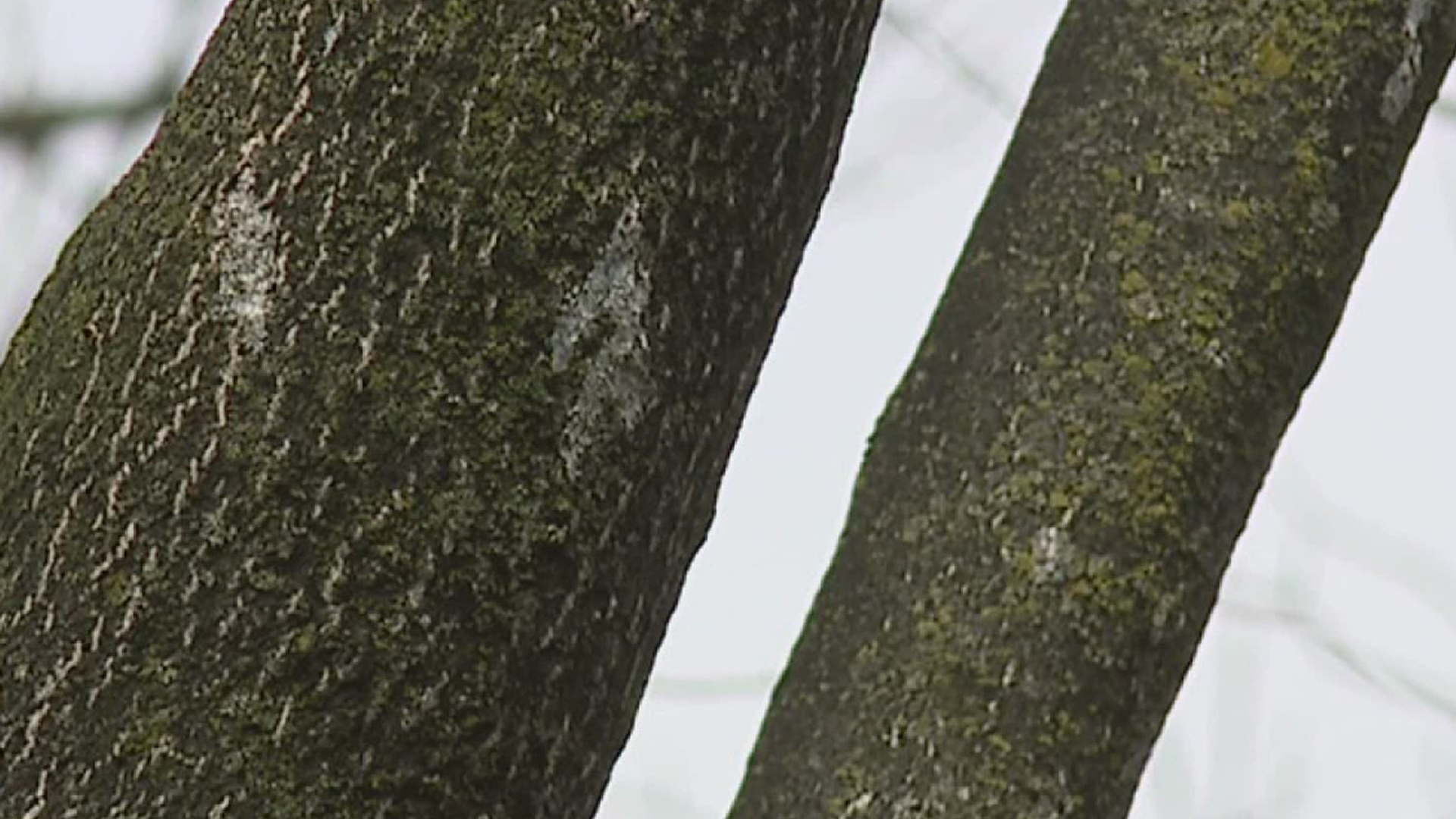HARRISBURG, Pa. — Note: The video is from May 13.
Spotted lanterfly season is beginning, and soon many Pennsylvania property owners will be looking for ways to rid themselves of the pesky invasive bugs.
Friday in Harrisburg, a specialist from the Pennsylvania Department of Agriculture demonstrated how homeowners can use a homemade "circle trap" to eliminate large numbers of spotted lanternflies -- without harming beneficial pollinators or small animals.
“Lanternflies are here, and anyone who lives in an infested area knows what a nuisance they are,” said Jay Losiewicz, a specialist whose job involves managing staff working in the field to control the invasive pest. “Circle traps are inexpensive to buy, easy to make with items you may have around the house and very effective.
“If you’re unlucky enough to have them on your property, this is one way you can help get rid of them and keep them from spreading. Trap or squish as many as you can at home, but don’t forget to check your car before you leave so you don’t take them with you.”
According to estimates based on current temperatures, lanternflies are approximately 50% hatched in the southernmost counties that have known insect populations in Pennsylvania, with the southeast being slightly farther along.
The invasive pest will be active and will reproduce and spread until fall frosts, the department said.
Penn State Extension’s website includes instructions for making your own circle trap, using easily obtainable items, including plastic milk jugs, duct tape, screen wire, twine, hot glue and gallon-sized food-storage bags.
Traps can also be purchased through agriculture and nursery supply stores, according to the department.
Here's how to make your own, according to Penn State Extension:
Materials
- 1 rectangle of window screen approximately 30" x 23" (plastic-coated screen works better than wire screen). For this demonstration, we used screening leftover from a pop-up canopy. Adjust the screen size to fit your tree. The idea is to have the opening of the skirt go around the trunk as far as possible to get the SLF to enter the trap.
- 1 piece of wood approximately 11" x 1" x 0.5" (cut from wooden lath, a yardstick, or even two paint stirrers duct-taped together can work)
- 1 piece of wood approximately 18" x 1" x 0.5"
- 32" of sturdy but bendable wire (you can cut this from a thin coat hanger)
- 2 tops of plastic milk jugs
- 1 one-gallon zip-type bag (with more for replacement as the bags fill up)
- Weather-proof, strong duct tape
- Staple gun with short staples (to attach the screening to the wooden strips)
- Office stapler (to tack the screening together)
- Hot glue gun
- 1 zip tie (to attach the zip type bag to the top of the trap)
- 1 piece of twine (to tie the top of the trap to the tree)
- A couple of push pins or a staple gun (to attach the bottom of the screening to the tree)
Directions
- Cut the tops from two plastic milk jugs.
- Attach them together with hot glue and duct tape. The hot glue adds strength.
- Fold insect screening and cut a small half-circle out at the top.
- Attach top of the cut half-circle of the insect netting with hot glue. This is the hardest part—you have to tack it and wait until the glue dries and then tack it again, working slowly all the way around.
- A section of the screening should overlap to keep the insects from escaping.
- If you are using flexible screening that can't support itself, use hot glue to attach the screening to the plastic top.
- Staple the longer piece of wood to the netting and to the plastic top.
- Fold the plastic top piece to direct the top of the tunnel more horizontal. Crease the plastic of the other top to make the top of the tunnel sturdy.
- Staple the shorter piece of wood to the netting. Tack the top part of the seam with an office stapler so the SLF can't escape through the seam.
- Use an office stapler to attach the wire to the side of the netting that has the shorter piece of wood. This will hold the outer part of the skirt away from the tree trunk and keep the entrance to the trap open. You will have to adjust the wire to make it fit the tree.
- Tie the top of the trap to the tree trunk. Use push pins or a staple gun to secure the bottom edge of the netting securely against the tree.
- Cut along the edges of the zip-type bag just enough to slip it over the plastic top. Secure it with a zip-tie.
- The finished trap on a tree. Make sure the back of the screening is tight against the bark of the tree and the tunnel you've built is not blocked anywhere.
For more information on Spotted Lanternfly, visit agriculture.pa.gov/spottedlanternfly.

